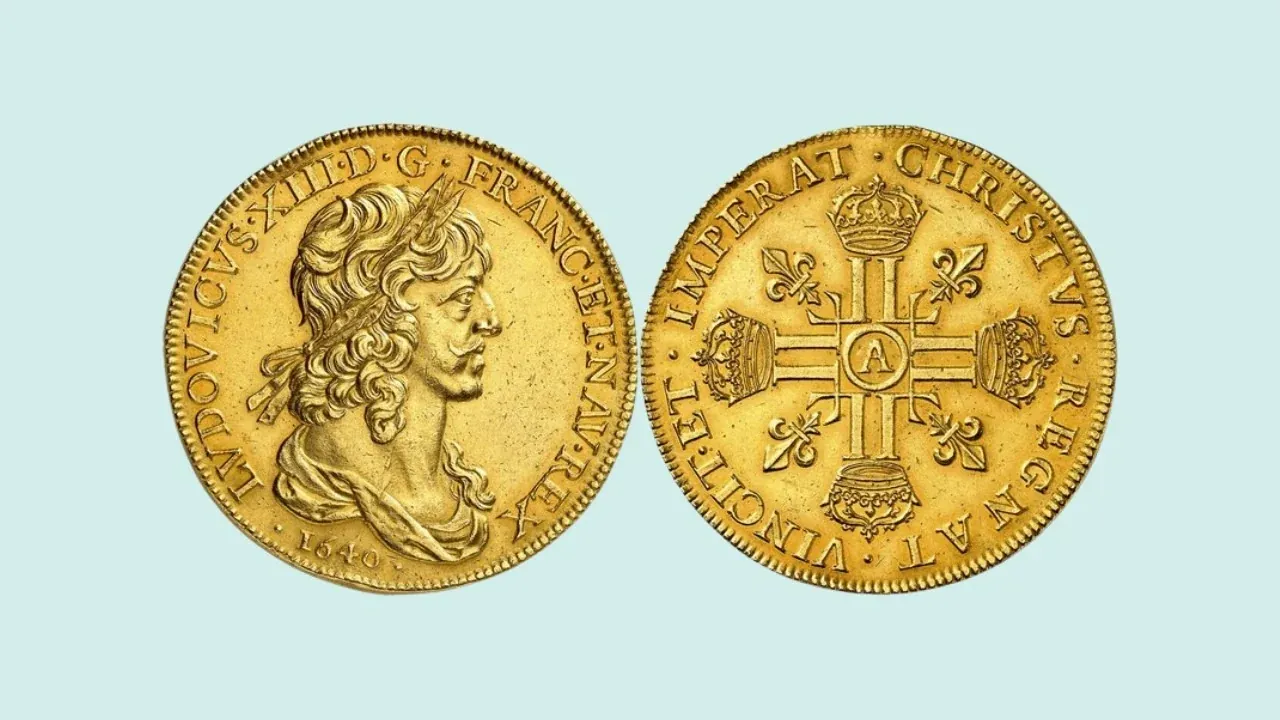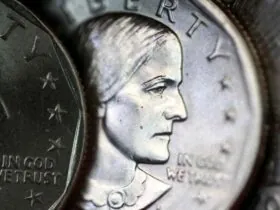European coinage boasts a rich history, tracing its origins to ancient times, including the Roman Empire, where coins were vital for trade, commerce, and cultural exchange. Over centuries, the continent has produced coins that reflect the socio-economic and political narratives of various eras. While some ancient coins command astronomical prices for their historical significance, even modern coins with unique features or errors can hold immense value for collectors.
The Value of Rare European Coins
This Article Includes
- 1 The Value of Rare European Coins
- 2 1. French 20 Euro Cents Reverse Mule (Modern Era)
- 3 2. Vatican Euro Coin Mule with Two Reverses (Modern Era)
- 4 3. 1270 French Louis IX Royal d’Or de Noyon
- 5 4. 1670 French Louis XIV 15 Sols
- 6 5. 1871 Spanish Amadeo I Gold Specimen 100 Pesetas
- 7 6. 1640 French Louis XIII 10 Louis d’Or
- 8 7. 1663 British Charles II Silver Pattern ‘Petition’ Crown
- 9 8. 1831 British William IV 5-Pound Coin
- 10 Factors Influencing Coin Value
- 11 Determining a Coin’s Value
- 12 Conclusion
The worth of a rare European coin depends on several factors: historical significance, rarity, condition, and unique features. Coins minted in limited quantities or with notable errors are particularly desirable. Additionally, “pattern coins,” designed as prototypes but never released for circulation, often achieve exceptional auction prices. Among the most sought-after are “mule coins,” created when mismatched dies are accidentally paired, producing fascinating errors that collectors prize.
Below, we delve into eight extraordinary European coins that have captured the fascination of numismatists worldwide.
1. French 20 Euro Cents Reverse Mule (Modern Era)

This modern coin is a testament to the allure of minting errors. The French 20 Euro Cents Reverse Mule features a unique anomaly—both sides display the reverse design. This “double tails” error occurred during the minting process when two reverse dies were mistakenly used. Such coins are exceedingly rare, and this particular specimen is a collector’s dream due to its distinctiveness.
Notable Feature: Double reverse design.
Estimated Value: $1,265.
2. Vatican Euro Coin Mule with Two Reverses (Modern Era)

The Vatican Euro Coin Mule is another modern marvel of minting mistakes. This coin features two reverse designs from different denominations: a 20-cent reverse on one side and a 50-cent reverse on the other. This intriguing error results from the pairing of dies meant for separate coins, making it a highly sought-after collectible.
Notable Feature: Two mismatched reverse designs.
Estimated Value: $2,875.
3. 1270 French Louis IX Royal d’Or de Noyon

Dating back to the reign of King Louis IX, this medieval coin is steeped in historical and religious significance. The Royal d’Or de Noyon is adorned with a crown of thorns motif, symbolizing King Louis IX’s devout Christianity. With only six known examples in existence, this coin’s rarity and connection to a pivotal period in French history make it exceptionally valuable.
Notable Feature: Crown of thorns design; only six known examples.
Estimated Value: $60,000.
4. 1670 French Louis XIV 15 Sols

Minted in Paris for French New World colonies, the 1670 Louis XIV 15 Sols is a rare gem. With an initial mintage of approximately 40,000, many of these coins were later melted down, leaving only a handful in existence. Featuring the image of the “Sun King,” this coin symbolizes efforts to standardize currency during Louis XIV’s reign.
Notable Feature: Limited mintage, small circulation.
Estimated Value: $132,000.
5. 1871 Spanish Amadeo I Gold Specimen 100 Pesetas

This exquisite gold coin was issued during the short and turbulent reign of King Amadeo I of Spain, which lasted just over two years. The brief production period resulted in limited mintage, making the 100 Pesetas coin an extraordinary rarity. Its detailed design and historical importance further elevate its desirability.
Notable Feature: Produced during a brief reign.
Estimated Value: $240,000.
6. 1640 French Louis XIII 10 Louis d’Or

The French Louis XIII 10 Louis d’Or holds the distinction of being the largest denomination ever minted in France. Weighing nearly 67 grams and measuring 44 millimeters in diameter, this gold coin was a symbol of wealth and power. Its size, coupled with the limited number of surviving specimens, makes it a standout piece in French numismatics.
Notable Feature: Largest French coin denomination.
Estimated Value: $456,000.
7. 1663 British Charles II Silver Pattern ‘Petition’ Crown

Created by engraver Thomas Simon, the ‘Petition’ Crown is both an artistic and historical masterpiece. This coin was part of Simon’s petition to regain his position as chief engraver at the Royal Mint. Fewer than 20 examples are believed to exist, each showcasing Simon’s extraordinary craftsmanship and the coin’s historical significance.
Notable Feature: Engraved petition along the edge; fewer than 20 exist.
Estimated Value: $960,000.
8. 1831 British William IV 5-Pound Coin

Renowned engraver William Wyon designed this magnificent proof coin, minted in extremely limited quantities. Featuring detailed portraits and intricate designs, the 1831 William IV 5-Pound coin was primarily created for presentation purposes. With only six to ten examples known to exist, its rarity and exquisite craftsmanship make it one of the most prized coins in British history.
Notable Feature: Limited to 6-10 examples, highly detailed engraving.
Estimated Value: $1,148,000.
Factors Influencing Coin Value
Several factors contribute to the high value of rare European coins:
- Historical Significance: Coins associated with significant historical figures or events are especially prized.
- Minting Errors: Anomalies such as mules or double dies increase a coin’s uniqueness and desirability.
- Rarity: Coins with limited production runs or few surviving examples fetch higher prices.
- Condition: Uncirculated coins or those in excellent condition typically command premium prices.
Determining a Coin’s Value
Assessing the value of a rare coin often requires professional expertise. Factors such as condition, historical context, and market demand all play a role. Coins are graded on a scale from Poor to Mint State by professional grading services, which helps establish their market value. Consulting with experienced appraisers or numismatists is recommended for accurate evaluations.
Conclusion
Rare European coins offer a fascinating glimpse into the continent’s history, artistry, and cultural evolution. From medieval masterpieces to modern minting marvels, each coin tells a unique story. Whether you’re a seasoned collector or a newcomer, exploring the world of European coins is a journey through time and craftsmanship, with the potential for both personal enrichment and financial reward.
Also Read:
THIS IS ONLY A BLOG POST FOR INFORMATION – WE DO NOT BUY, SELL, OR APPRAISE THESE ITEMS







Leave a Reply